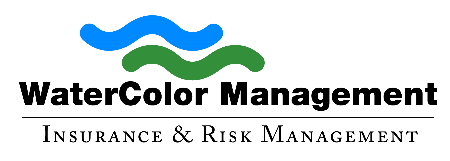
As an agent, your job is to protect the investments and assets of your clients. Wastewater plants contain some of the highest numbers of risks across industries, and when talking to clients about wastewater treatment insurance, it important they understand the exposures they face. By isolating the areas of risk, your client can put a comprehensive risk management plan in place to minimize the possibility of liability claims in those areas. By proactively addressing safety concerns, an insurer is more willing to provide coverage at a reasonable rate.
What Types of Safety Issues Might There Be at a Sewage Treatment Plant?
There is a myriad of safety issues facing treatment plants that can lead to severe consequences when negligence or inaction is at hand. The occupational risks for employees extend from falls, slips, and sprains to more severe illnesses like blindness or respiratory infections from inhaling hazardous particles.
Biological Exposures
Biohazards are a concern at wastewater treatment facilities, and employees are faced with the following threats from contaminated water or aerosols:
- Parasites
- Fungi exposure
- Bacteria such as Legionella, Salmonella and E. coli
- Viruses like hepatitis A
Physical Injuries
In addition to the biological hazards of the facility, workers are exposed to similar physical injuries often found across industry workplaces. There are common injuries of muscle sprains, falls, head injuries from falling objects, trips, or injuries from heavy equipment use. However, wastewater facilities present a serious potential for drowning, accidental exposure to energized equipment, or exposure and contact to harsh chemicals or gases. These situations require extreme vigilance and strong safety protocols to limit the likelihood of an incident.
What Plans Can Be Made To Improve Safety at a Sewage Treatment Plant?
As your clients seek to minimize their risks, you can be ready with advice on a plant safety program. You can have the following checklist on hand to pass along to clients who need to improve their preparedness against serious injuries and illnesses.
- Develop a unique response plan to address each type of in-plant exposure (chemicals spills, burns, drowning, severe weather, slips, overflows, material handling, and more) and establish a director for the safety program.
- Have a clear documentation process that follows a chronological response and includes relevant details concerning who was there, how it happened, when it happened, where it was, and what the situation was.
- Conduct thorough training on the response plan regularly and post copies of the plan in public areas to develop heightened awareness.
- Schedule drills to review and test understanding of response procedures and to reduce panic or confusion during a real incident.
- Ensure each employee is fully outfitted with personal protective equipment and trained on its use.
Though not comprehensive in safety measures, this advice can direct you when working with clients owning wastewater treatment facilities. Addressing hazards and risks head benefits their insurance coverage and employee safety.
About Watercolor Management
Watercolor Management has insured the water industry for over 30 years. Our policies include unlimited defense cost coverage in the event of a lawsuit against you. Call us at (855) 929-0824 or email info@watercolormanagement.com for a quick quote for your Water Business Professional, Products/Completed operations, Pollution and General Liability Insurance.




